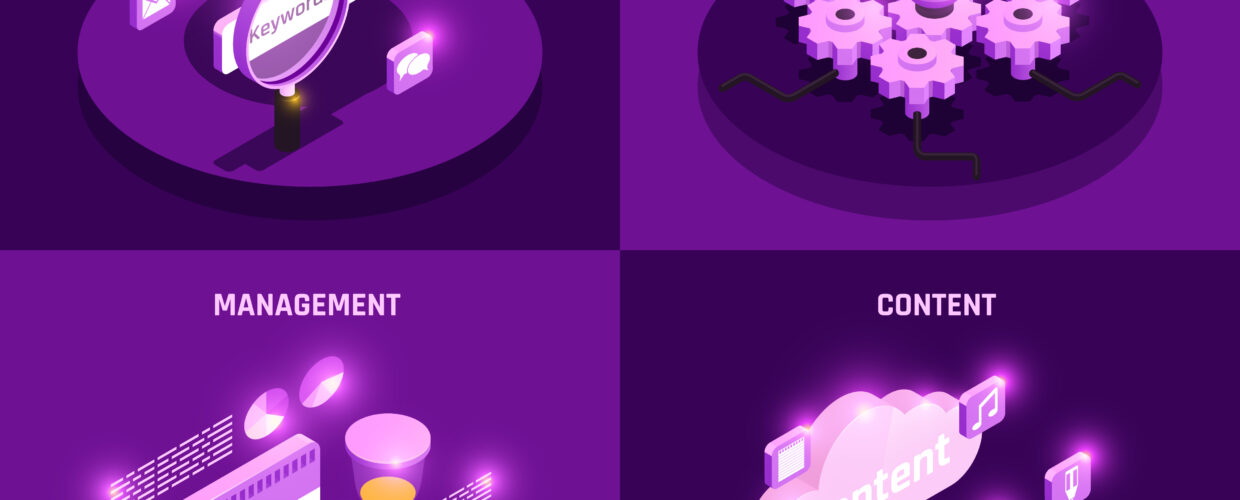When first delving into SEO, the variety of tools available can be overwhelming. From keywords to backlinks and page speed, the vast array of options can seem like a daunting task. However, with time, it becomes clear that the right tools can simplify the process and even make it enjoyable.
For anyone seeking to improve blog posts and enhance website SEO, the following tools are crucial to achieving success. This guide will detail the tools used in the content creation process and how they help optimize every aspect of SEO.
Effective Keyword Research: The Foundation of Every Post
Before creating any content, it’s essential to understand what people are actively searching for. This step, keyword research, is the foundation of any successful SEO strategy. The following tools assist in this process:
- Ubersuggest – Ideal for beginners, it provides keyword ideas, search volume, and SEO difficulty.
- SEMrush – A robust tool for deeper data and competitive analysis.
- Ahrefs – Excellent for discovering keyword ideas and performing SEO analysis.
- Google Trends – A useful resource for identifying trending topics and comparing keywords.
- AnswerThePublic – Reveals the common questions people are asking related to a specific topic.
- Google Keyword Planner – A reliable tool from Google for keyword insights.
- Small SEO Tools – Offers a variety of utilities, including keyword suggestions and density checkers.
Once a keyword with high search volume and low competition is identified, it becomes clear that the topic is worth pursuing.
Writing with SEO in Mind
The writing process involves more than just crafting words on a page. Planning, structuring, and writing strategically with SEO in mind ensures the content is optimized for search engines. The following tools provide invaluable support:
- SEO Minion (or SEO Detail Extension) – Analyzes how top-ranking pages are optimized for specific keywords.
- OpenAI (ChatGPT) – A valuable tool for brainstorming outlines, generating ideas, and refining content.
- ChatSonic – A suitable alternative for creating content with varying tones or styles.
- Ahrefs Title Generator – A tool for generating SEO-friendly and attention-grabbing headlines.
Refining and Polishing the Article
Once the first draft is complete, thorough editing is necessary before publishing. The following tools are instrumental in ensuring the content is polished, readable, and free from errors:
- DupliChecker – A plagiarism checker to ensure the content is original.
- ZeroGPT – Checks if the writing sounds overly robotic or AI-generated.
- Spinbot – A tool for rewriting sentences or paragraphs, offering alternative phrasing.
- Google Translate – An unconventional method of rewriting by translating content to another language and back to refresh the phrasing.
Optimizing Content for Search Engines
After the article is written and edited, the next step is optimization to ensure search engines understand the content’s relevance. This involves:
- Selecting an SEO Plugin – Options include All in One SEO, Yoast SEO, or Rank Math.
- Adding a Title – Ensure the title is under 60 characters for optimal display in search results.
- Writing a Meta Description – A compelling description under 160 characters that incorporates the focus keyword.
- Using the Focus Keyword – Integrate the focus keyword naturally in the title, subheadings, and throughout the article.
- Adding Transition and Passive Words – These words help with readability and are often checked by SEO plugins for content flow.
- Inserting an Image – Including images with proper alt text that includes relevant keywords.
Ensuring Fast Website Speed
A slow website leads to poor user experience and lower rankings. Regularly checking and improving website speed is essential for SEO. The following tools help monitor performance:
- PageSpeed Insights – A detailed tool from Google that provides insights on website performance.
- GTmetrix – Provides a performance score and suggestions for improvement.
- Pingdom – Allows testing from multiple locations to gauge website speed.
To enhance website speed, the following actions are recommended:
- Optimize Images – Using plugins such as Smush to reduce image sizes.
- Enable Lazy Loading – Implement lazy loading using Smush to ensure fast loading times.
- Reduce CSS and JavaScript – Utilize LiteSpeed Cache to minimize CSS and JavaScript files.
- Minimize Code – Ensure the website code is clean and streamlined.
Key Takeaways
Not every SEO tool is necessary to achieve success. It’s about choosing the right tools that streamline the process and produce the best results. The focus should be on:
- Smart planning
- Writing with SEO in mind
- Proper optimization before publishing
- Ensuring the website is fast and user-friendly
By adhering to these practices, producing content that is both valuable to readers and optimized for search engines becomes second nature. With consistency, the content will rank higher and attract a larger audience.
Would you like to receive this guide as a downloadable checklist or a printable version? Feel free to reach out for more information.



